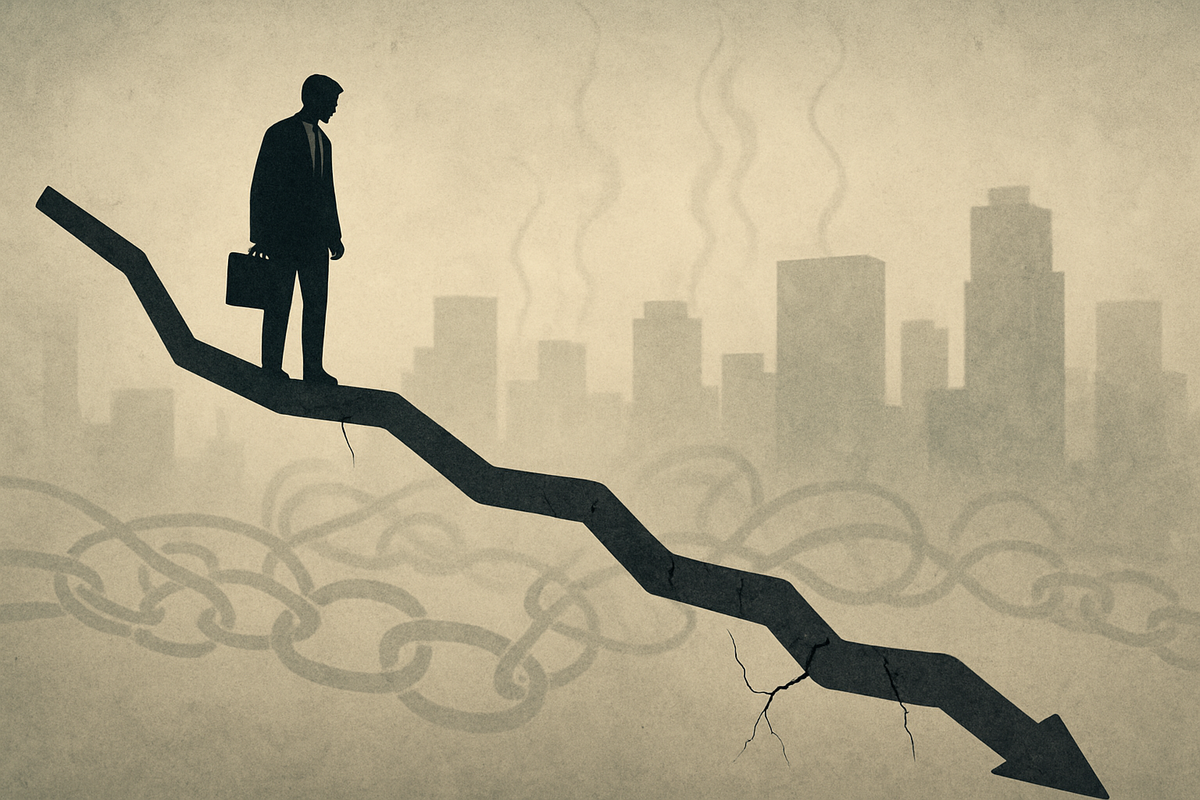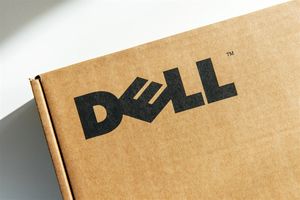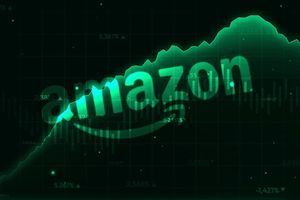
The American economic landscape just received a cautionary signal as the National Federation of Independent Business (NFIB) Business Optimism Index unexpectedly dipped in September 2025. Released on October 14, 2025, this latest report indicates a notable decline in confidence among small business owners, marking the first drop in three months and falling below analyst expectations. This unexpected downturn suggests growing apprehension within a crucial segment of the U.S. economy, raising questions about future growth trajectories and stability.
Detailed Coverage: A Snapshot of Small Business Sentiment
The NFIB Small Business Optimism Index fell by 2.0 points, settling at 98.8 in September 2025, down from 100.8 in August. This decline, while still slightly above the index's 52-year average, was accompanied by a significant 7-point surge in the Uncertainty Index, reaching 100 – one of its highest readings in over five decades. This data paints a picture of small business owners grappling with a complex web of economic challenges, even as some aspects of their operations show resilience.
A primary concern highlighted by the report is the intensification of inflationary pressures. A notable 14% of owners now identify inflation as their most pressing problem, a three-point increase from August, with a net 24% already raising selling prices and a net 31% planning further increases. This suggests that the battle against rising costs is far from over for many small enterprises. Concurrently, persistent supply chain disruptions continue to plague businesses, with 64% reporting some degree of impact, a significant 10-point jump from the previous month.
Furthermore, future sales expectations have moderated considerably, with the net percentage of owners anticipating better business conditions over the next six months plummeting by 11 points. The labor market also remains a tight spot, with 32% of owners still struggling to fill job openings. Interestingly, a historic decline was noted in inventory levels, with a net negative 7% of owners deeming current stocks "too low." Despite these headwinds, a silver lining appeared in actual earnings changes, which recorded their highest level since December 2021, indicating that some businesses are managing to maintain profitability amidst the challenges. NFIB Chief Economist Bill Dunkelberg summarized the situation, stating that while businesses remain generally healthy, they are navigating a difficult environment marked by inflation, tempered sales outlooks, and high uncertainty.
Potential Winners and Losers in a Shifting Economic Climate
A decline in US business optimism, coupled with persistent inflation, ongoing supply chain woes, and tempered sales expectations, creates a challenging yet selective environment for public companies. This economic climate is likely to produce a clear bifurcation in market performance, with some sectors demonstrating resilience or even growth, while others face significant headwinds.
Companies operating in Consumer Staples are often seen as defensive plays during periods of economic uncertainty. As consumers prioritize essential goods, firms like Procter & Gamble (NYSE: PG), which produces household necessities, and Costco Wholesale (NASDAQ: COST), a purveyor of bulk essential goods, tend to maintain stable demand. Similarly, the Healthcare sector typically remains robust, as demand for pharmaceuticals, medical devices, and services is largely inelastic. Utilities also stand to be resilient, as providers of essential services like electricity and water, often with the ability to pass on increased costs through regulated rate adjustments. Furthermore, Energy and Commodities companies, such as ExxonMobil (NYSE: XOM) and Chevron (NYSE: CVX), may benefit from higher commodity prices that often accompany inflationary environments.
Conversely, sectors heavily reliant on discretionary consumer spending are poised to suffer. Consumer Discretionary companies, including luxury brands, airlines like Delta Air Lines (NYSE: DAL), cruise lines such as Carnival Corporation (NYSE: CCL), and many entertainment providers, will likely see reduced demand as consumers tighten their belts. The Technology sector, particularly firms focused on consumer electronics and high-growth companies valued on future earnings, could also struggle as businesses and individuals scale back on non-essential investments. Even giants like Apple (NASDAQ: AAPL) and Microsoft (NASDAQ: MSFT) might experience slower sales in certain segments.
The Real Estate and Construction sectors are highly vulnerable to declining optimism, tightening credit conditions, and reduced purchasing power, especially if interest rates continue to rise. Manufacturing firms will grapple with elevated raw material costs, supply chain disruptions, and potentially softer demand. Companies with weak pricing power across various industries will also face significant challenges, as they struggle to pass on increased input costs, leading to compressed profit margins. This economic environment demands strategic agility, with companies that can adapt to evolving consumer behavior and manage cost pressures effectively being best positioned to navigate the choppy waters ahead.
Wider Significance: Echoes of Uncertainty and Shifting Economic Tides
The unexpected dip in US business optimism, alongside the enduring challenges of inflation, supply chain disruptions, and tempered sales forecasts, represents more than just a momentary blip; it signals a complex and potentially prolonged shift in the broader economic landscape. As of October 14, 2025, these intertwined factors are reshaping industry trends, creating ripple effects across global markets, influencing regulatory responses, and drawing comparisons to challenging periods in economic history.
This confluence of factors is deeply embedded within broader industry trends. The manufacturing sector, for instance, faces increased costs and slower growth, exacerbated by new US tariffs on imports like copper and auto parts, and service fees for Chinese-owned vessels. This push towards re-shoring production, while aimed at resilience, often translates to higher domestic input prices. Retail and consumer goods industries are bracing for a cautious holiday season, with consumers increasingly sensitive to price hikes despite forecasts of modest sales growth. The logistics and shipping sectors are directly impacted by escalating trade tensions between the US and China, leading to higher transportation costs and the need for sophisticated supply chain digitization to maintain visibility and adaptability. Even the pharmaceutical supply chain is under pressure from new tariffs on active pharmaceutical ingredients (APIs), risking cost escalation and drug shortages.
The ripple effects extend far beyond US borders, impacting competitors and partners globally. The "tit-for-tat" tariff exchanges and export controls between the US and China continue to weigh on global financial markets, particularly affecting technology and semiconductor firms. International businesses relying on US regulatory approvals or integrated into US-dependent supply chains face increased compliance challenges and potential delays due to the ongoing federal government shutdown, which commenced on October 1, 2025. This shutdown, estimated to cost $5 billion in lost economic output per week, not only affects federal workers and contractors but also delays critical economic data, fueling market uncertainty and potentially triggering a flight to safety among investors.
From a regulatory and policy standpoint, central banks, particularly the Federal Reserve, are navigating a delicate balance. Having initiated rate cuts in September 2025, further reductions are anticipated by year-end, aiming for a federal funds target range of 3.50% to 3.75%, while also concluding "Quantitative Tightening" in early 2026. Trade policy remains highly active, with the current administration implementing and considering new tariffs, including a potential blanket 10% tariff on all imports and specific duties on goods from India and Brazil, alongside discussions of significant tariff increases on imports from China, Mexico, and Canada. These measures, while intended to boost domestic production, inherently carry inflationary risks. Furthermore, there's a discernible trend of the US potentially retreating from climate regulations, which could create a competitive disadvantage for American businesses as other nations advance their clean energy manufacturing.
Historically, the current economic climate bears striking resemblances to the "stagflation" era of the 1970s, characterized by persistent inflation, supply chain disruptions (then primarily oil shocks), and slowing economic growth. The significantly elevated Uncertainty Index in the NFIB survey, now at its fourth-highest reading in over 51 years, underscores a level of business trepidation seen only a few times in history. Past government shutdowns have consistently demonstrated negative impacts on GDP growth, while trade wars have invariably led to increased costs and market volatility. These historical parallels serve as a stark reminder of the complexities involved in navigating such a multifaceted economic environment, demanding adaptable business strategies and careful policy management to mitigate risks and foster stability.
What Comes Next: Navigating the Path Ahead
The road ahead for the US economy, shaped by declining business optimism, persistent inflation, and ongoing supply chain issues, presents a complex array of short-term and long-term possibilities. As of October 14, 2025, businesses and policymakers are grappling with a cautious but adaptable economic environment that demands strategic pivots and a keen eye on emerging opportunities and challenges.
In the short term (2025-2026), the US economy is projected to experience a moderation in real GDP growth, with forecasts ranging from 1.7% to 2.1% in 2025, further decelerating to 1.4% to 1.8% in 2026. This slowdown is attributed to factors such as elevated tariffs, higher interest rates, and reduced immigration. However, robust investments in artificial intelligence (AI) are noted as a significant tailwind, particularly in business investment, potentially offsetting some of the drag. Inflation is expected to remain persistent, with CPI growth averaging around 2.9% in 2025 and possibly accelerating to 3.2% in 2026, partly due to tariff impacts. Despite this, the Federal Reserve is anticipated to implement further rate cuts, with expectations of a 25 basis point cut by year-end 2025 and additional easing in 2026, driven by political pressure and employment concerns. Consumer spending is expected to remain relatively strong through late 2025 before a more substantial slowdown in 2026, while the housing market anticipates an uptick in sales, supported by stabilizing mortgage rates and job growth.
Looking further out (beyond 2026), real GDP growth is expected to rebound above 2% in 2027 before potentially settling back below 2% through 2030, with business investment, particularly in AI, continuing to fuel growth. Inflation is generally expected to moderate after 2026, with CPI easing to around 2.3% by 2030. The labor market is projected to cool, with the unemployment rate rising to 4.5% in 2026 and averaging 5% in 2027. Elevated tariffs are likely to remain in place, leading to slower growth in exports and imports, while emerging markets are poised to play an increasingly crucial role in global economic growth, albeit facing their own set of geopolitical and climate risks.
To navigate this evolving landscape, businesses will need to implement significant strategic pivots. Supply chain diversification and resilience are paramount, with companies rethinking sourcing strategies, diversifying production locations (e.g., "China-plus-one" approaches), and increasing localized manufacturing to mitigate geopolitical risks and tariffs. Technology investment, especially in AI, will continue to be a significant driver of efficiency and innovation. Financial prudence and flexibility will be crucial for maintaining healthy cash flow and diversifying revenue streams. Adopting customer-centric strategies to meet evolving expectations for faster delivery and personalized products, alongside agile business models that prioritize speed and data-driven decisions, will be essential. Furthermore, businesses must develop tariff mitigation strategies and focus on network diversification to address changing trade policies effectively. Market opportunities will primarily emerge from the AI and high-tech sectors, the growth of e-commerce, and the rebound in the housing market, as well as expansion into resilient emerging markets. Challenges will stem from persistent inflation and tariffs, a cooling labor market, ongoing geopolitical instability, and increased cybersecurity risks.
Potential scenarios range from a baseline of moderated growth with persistent but gradually easing inflation, to a downside scenario characterized by higher tariffs leading to more entrenched inflation and a sharper economic slowdown, potentially pushing unemployment higher. An upside scenario could see a more favorable trade environment, stronger immigration, and a productivity boom from AI adoption driving faster growth and softer inflation. As of today, October 14, 2025, the economy shows short-term resilience with strong Q3 GDP growth and continued high-tech investment. However, the undercurrent of business uncertainty, tariff-exacerbated inflation, and a softening labor market points to a more subdued outlook for 2026.
Comprehensive Wrap-up: Charting a Course Through Economic Headwinds
The unexpected dip in the NFIB Business Optimism Index for September 2025 serves as a potent reminder of the complex and challenging economic currents shaping the United States. Key takeaways from this recent data, released on October 14, 2025, highlight declining business optimism, persistent inflationary pressures, ongoing supply chain vulnerabilities, and moderated sales expectations. The significant rise in the Uncertainty Index, reaching its fourth-highest level in over five decades, underscores a pervasive sense of apprehension among small business owners.
Moving forward, the market is expected to navigate a period of decelerating economic expansion. While real GDP growth is projected to moderate in 2025 and 2026, inflation, particularly core Personal Consumption Expenditures (PCE), remains stubbornly above the Federal Reserve's 2% target, partly influenced by new tariffs. This sticky inflation presents a delicate balancing act for the Federal Reserve, which has already initiated rate cuts in September 2025 and is anticipated to pursue further easing in the coming months, aiming to achieve a "soft landing" without triggering a significant recession. The labor market is showing signs of cooling, with weaker job gains and a rising unemployment rate, which could further temper consumer spending.
The significance and lasting impact of these trends will be profound. Businesses are already demonstrating remarkable resilience and adaptability, actively diversifying supply chains, and making substantial investments in advanced technologies like Artificial Intelligence (AI) to enhance efficiency, mitigate risks, and foster long-term growth. This ongoing transformation suggests a lasting shift in operational strategies and business models, prioritizing agility and strategic foresight. Geopolitical tensions and evolving tariff policies add layers of complexity, potentially impacting trade growth and consumer prices for the foreseeable future.
Investors should remain vigilant in the coming months, closely monitoring several critical indicators. The Federal Reserve's rate path will be paramount, with any guidance from Chair Jerome Powell on the pace and magnitude of future interest rate cuts significantly influencing market direction. Inflation data, especially core PCE, will be a crucial metric; persistent "sticky" inflation could force a reassessment of the central bank's easing strategy. Labor market reports, including unemployment rates and job growth, will offer vital insights into overall economic health. Corporate earnings will provide a real-world gauge of how monetary policy and economic headwinds are affecting business profitability. Finally, developments in tariff policies and their impact on international trade and consumer prices, alongside the continued efforts by businesses to enhance supply chain resilience, will be key factors to watch as the US economy charts its course through these evolving challenges.
This content is intended for informational purposes only and is not financial advice







